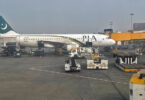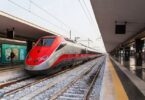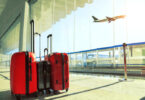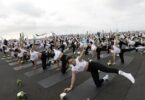Özge Sengelen
Innsbruck is a city embraced by the Alps, painted with the most pastel tones by an artist, like a canvas kissed by the enthusiasm of the Inn River
As we approach winter, I will talk about a city that I discovered in autumn, but it’s truly a winter destination. But before delving into the city, perhaps I should talk a bit about the region where this city is located.
Last week, during our 10-day family autumn vacation, we turned our direction to South and North Tyrol. This region, known as the Tyrol Region, is spread across two countries. The reason for this division is that after World War I, in 1919, Tyrol was split into northern and southern parts. After World War I, the northern part of the Tyrol Region, namely North Tyrol, was given to Austria in 1937, and the southern part of the Tyrol Region, namely South Tyrol, was given to Italy. North Tyrol is reasonably well-known today, but few may know that a portion of Tyrol is in Italian territory. Especially in terms of geography, South Tyrol, which has an entirely different appearance from the classic Italian view, is one of Italy’s autonomous regions. I will describe this region and its capital in more detail in my next article.
On this trip, where we had the opportunity to visit the capitals of these regions located in different countries and a few natural formations around them, I must say I was fascinated by Innsbruck, the capital of North Tyrol, one of Austria’s nine states.
Whenever I was asked which color I liked the most, I thought choosing one color from pastel colors would be unfair to the others. Well, Innsbruck is exactly like that. It seems as if the whole city has been painted with every color without being unjust to any pastel shade.
Its colorful houses, historical texture, Alpine views I encountered when I looked up, the enthusiasm of the flowing Inn River and the sunset I experienced on the Innbrücke Bridge have already become part of my unforgettable travel experiences.
Integrating with the surrounding Alpine Mountains and the Inn River flowing enthusiastically through the city center, Innsbruck offers a magnificent tableau with its natural beauties, historical texture and colorful streets. Innsbruck is like an award-winning masterpiece of a painter with its natural beauty, historical texture and colorful streets.
Known as the capital of the Alps, Innsbruck has ranked fifth among Austria’s largest cities. Located on the road connecting Germany, Austria and Italy, close to Munich in Germany and Verona in Italy, Innsbruck is situated on the Inn Valley. Especially during the winter sports season, the city hosts ski enthusiasts and has an airport located about 4 kilometers (2.5 miles) from the city center. Since the airport is so close to the city center, while strolling through Innsbruck’s historic streets filled with short buildings, it feels as if you can almost touch the planes passing overhead by raising your hand.
Our baby, who is particularly fond of planes, couldn’t take his eyes off the sky in Innsbruck. Every detail in Innsbruck urged us to stay here for two or three days. However, I must say for travelers coming here, you won’t need too much time to visit its important places. Of course, apart from seeing the city center, there might be activities you want to do in this region. If you want to go up to the Nordkette Mountains near the city center, go skiing, visit the famous hiking routes in Karwendel Nature Park or go to the Alpine Zoo, you might need more time.
Maria Theresien Street
As soon as we arrived in the city, our first stop was the Saint Anna Column, located on Maria Theresien Street, the busiest street in the town. This column was built in the early 1700s to remember those who died in the war between the Bavarian Duchy and the Tyrol province. Rising to the sky, the Saint Anna Column, surrounded by magnificent baroque-style buildings and the Triumphal Arch at the end of the street, creates a splendid atmosphere. You can capture beautiful photos here.

Goldenes Dachl
While exploring the city, you might find yourself in the Old Town, or as the Austrians call it, Altstadt, many times. The colorful lined houses, restaurants sparkling with tables set on the streets and the structures from the Middle Ages make the heart of the city beat here.
After a long photo break on the street, our next stop was the Goldenes Dachl, located in the Old Town. We could have saved the column for later and headed to the Triumphal Arch at the end of the street after seeing the Goldenes Dachl. However, the Goldenes Dachl, dazzling me with its golden glimmers, was calling me. It was the place I was most curious about before coming here.
This building, called Goldenes Dachl, has a balcony with a golden roof and is one of the symbols of the city. It is located right in the center of the Old Town.
Built in the 15th century, it to be used as a residence by Archduke Friedrich IV. The roof of the building, completed in 1500, was made using 2,738 copper nails covered with gold leaf. Even on a cloudy day, the roof is incredibly shiny.
On the building with this golden roof balcony built for Emperor Maximilian and his wife Burgundy Maria in memory of their wedding, there is also an inscription that catches the eye. Although it is not yet known exactly what it says, it is thought to mean, “Use every moment, dance every dance; you can’t take anything with you.”
I don’t know how many different angles I took photos of it. This building, which adds a different atmosphere to the Old Town and the square, seemed to have sprung from a fairy tale.
Triumphal Arch
At the end of Maria Theresien Street, there is a magnificent structure that has become the symbol of the city. We saved the Golden Roof to see it last, but actually, we could have visited the Triumphal Arch first. This structure is similar to the colossal arches you see in many cities such as Paris, Berlin and Munich, but it’s a miniature version. This Triumphal Arch was built in 1765 in honor of the marriage of Leopold II and Maria Ludovika have one face representing joy and another representing sorrow. It is said that the reason for this is the death of Leopold II’s father, Franz I, during the wedding celebrations.
Stadttrum
One of the striking structures in the square in the Old Town is the Stadttrum, which stands at a height of 30 meters. The “City Tower,” as it is called, is considerably taller than the surrounding buildings and is located right next to the golden roof.
This tower provides an opportunity for those who want to climb to high places without going far, where you can watch Innsbruck’s colorful medieval streets and the Nordkette mountain range.
Bergisel Ski Jump Tower
On a high hill in the south of the city stands a tower erected in 1892 in honor of the commander Andreas Hofer, who served during the Bergisel Battles. The area where the tower, which has been used for ski jumping competitions in the city since 1852, is located was also used in the Winter Olympics of 1964 and 1976.
Regarding skiing and winter tourism in Europe, Innsbruck is one of the first cities that come to mind. Innsbruck hosted the Winter Olympic Games in 1964 and 1976, the Winter Paralympic Games in 1984 and 1988, and the inaugural Winter Youth Olympic Games in 2012. By the way, if I tell you that the world-renowned ski jumper is a sportsman from Innsbruck named Gregor Schlierenzauer, you probably won’t be surprised, right?
You can reach the tower, where you can enjoy the panoramic view of the city, by funicular or after a long walk.
Swarovski Museum
I left the most glittering detail of this colorful city to the end. The production and operational facilities of the world-famous Austrian brand Swarovski are located in this beautiful city.
In the museum inside the facilities, you can visit an exhibition about precious stones. You can explore this magical Swarovski world adorned with crystals. Undoubtedly, the most enjoyable part of the facility will be the room where you can experience how you can see your surroundings from inside a crystal.
Alpenzoo
A place I can recommend, especially for those traveling with children in Innsbruck, is Alpenzoo, known as Austria’s, even Europe’s, highest-altitude zoo. With its breathtaking view, Alpenzoo captures the hearts of adults and it attracts the attention of children with approximately 2,000 animals of about 150 species. Alpenzoo, which houses a large aquarium, also hosts Europe’s largest golden eagle. Here, you can see many native animal species living in the Alps.
Apart from all I have mentioned, other significant places you can see in Innsbruck include the Hofburg Palace and its garden, Hofgarten, Helblinghaus, St. Jakob’s Cathedral, Ambras Castle and Europe’s highest bridge, Europabrücke.
Also, if you want to enjoy the view of Innsbruck from above, you can take the funicular to Nordkette.
Of course, while you are in Austria, don’t forget to try the famous schnitzel. Later, make sure to visit Valier and Munding pastry shops to taste local desserts. Then, sitting by the Inn River on the Old Town side, enjoy a cup of coffee and let your spirits be lifted by the colorful houses on the other side of the bridge, enchanted by the magnificent view of the Alpine Mountains surrounding the city like a wall and reaching up to the sky.







